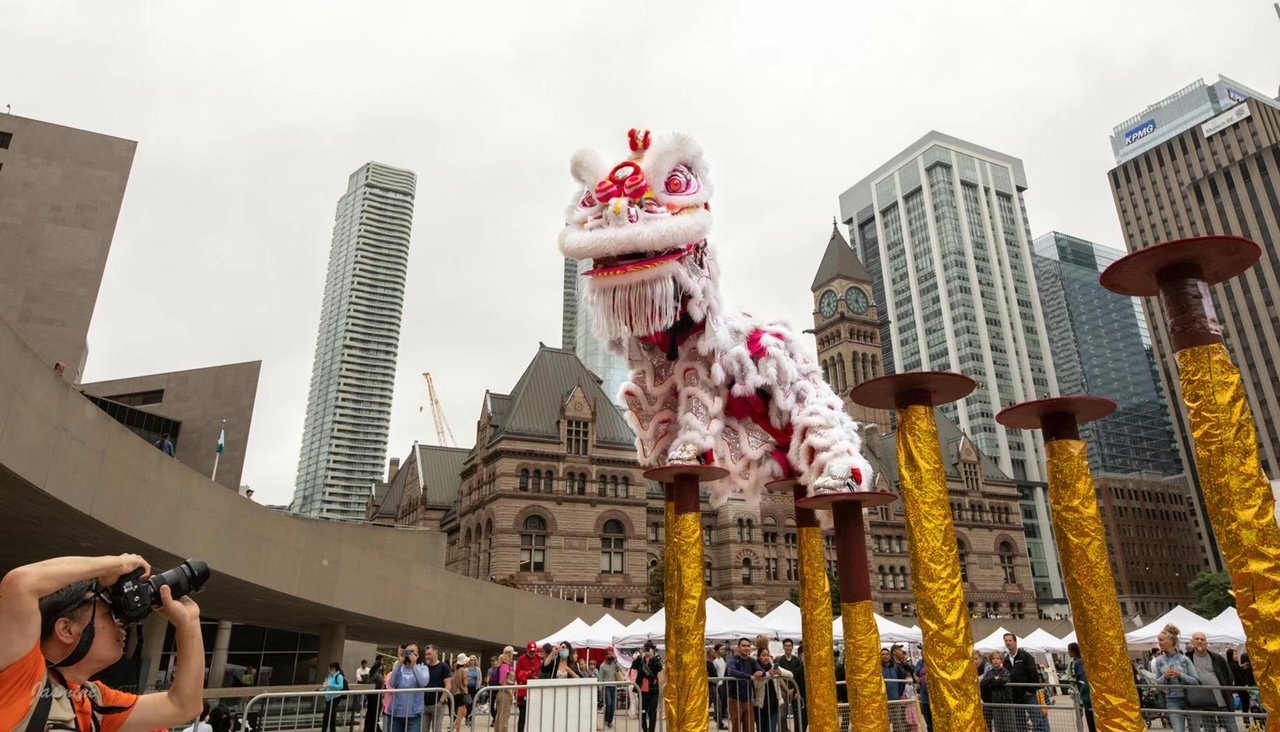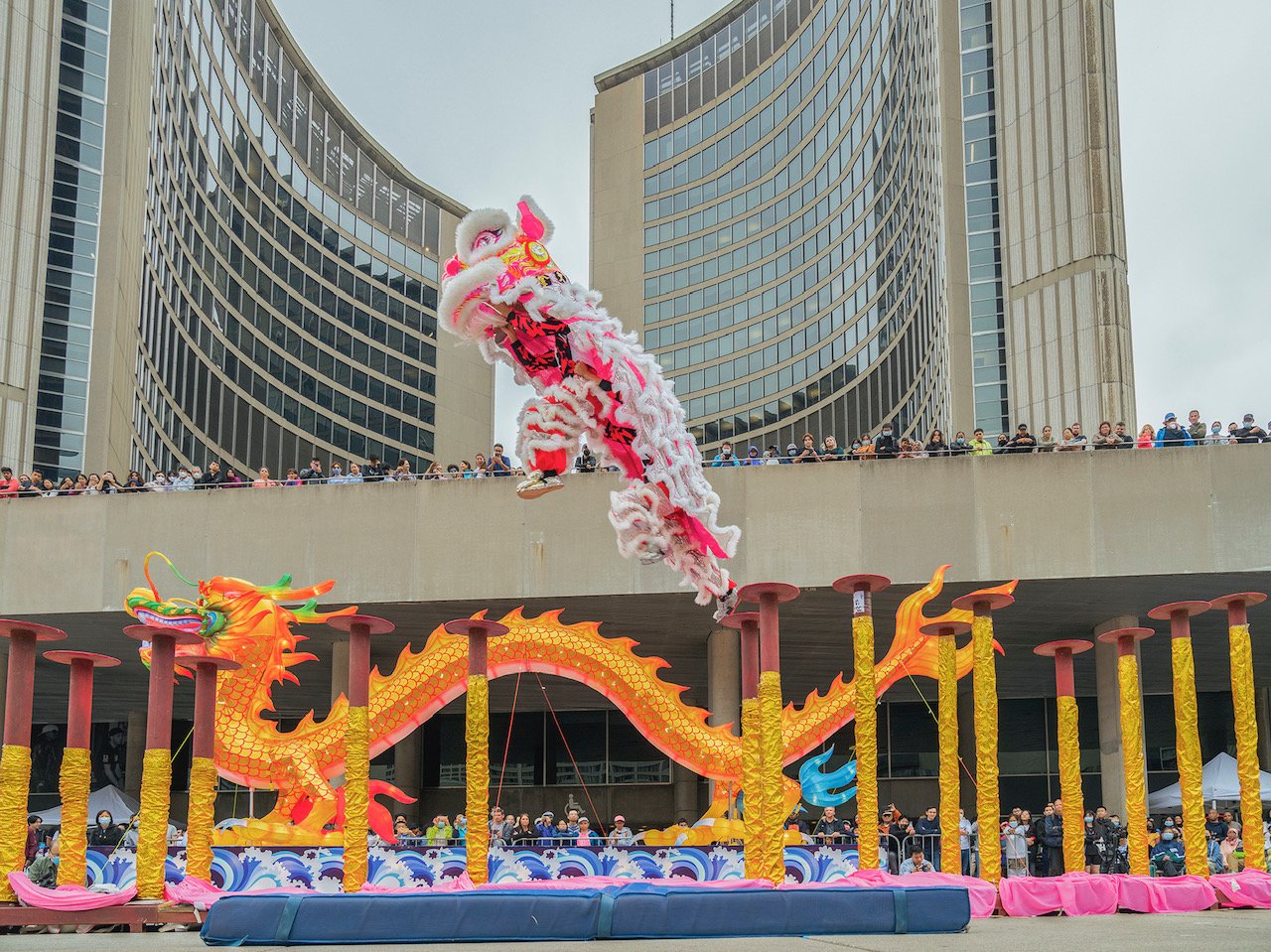‘Housewarming’ is Karine Giboulo's newest exhibition that explores feelings of isolation and daily lives during pandemic times
By: Ionna Hipolito
Montreal-based artist Karine Giboulo presents “Housewarming” at Gardiner Museum in Toronto as a reimagined version of her home, embodied in over 500 miniature polymer clay figures and furniture.
Sharing the then-common sentiment of being confined and stuck at home during the pandemic, Giboulo used her home as the base model for “Housewarming,” hoping to “explore the state of the world” through her art, as she mentioned in her interview statement. The exhibit is available for viewing from Oct. 20, 2022 to May 7, 2023, on the third floor at Gardiner Museum.
Giboulo began working on this project in 2020 as a creative outlet during the unprecedented time. The entire exhibition took about two years to complete, and the process of creating the clay figures started on her kitchen table.
“When I was in my home for the first two to three weeks, I was in shock and not really working,” Giboulo said. “After the initial shock, the more I worked, it became a really creative process for me. I was not able to do the work I was doing before — it helped me [cope].”
Having previously worked on paintings that featured “little figures” and their stories, Giboulo was inspired to create 3D versions of those figures. “I’ve never sculpted before that. I didn’t even have any equipment. I just went to an art store and bought this box of clay, and when I started to work with it, it was easier than doing 2D works,” she explained.
The artist said one of her favourite parts in putting together the exhibition was working with the museum staff and the exhibition manager through a Zoom meeting. “We built [the] whole house and placed the work, and it was super fun and really exciting.”
Giboulo invites visitors to immerse themselves in the experience and discover the stories told throughout the journey in her reimagined home. The miniature figures interact and blend with everyday household furniture to portray a bigger picture; there are also installations inside Amazon boxes that address social and environmental issues. The boxes can be located outside the "house" perimeter and inside rooms, but Giboulo provides the audience with a pamphlet that guides them through a recommended viewing order.
Miniature Amazon workers preparing packages in a warehouse created by Karine Giboulo and displayed at the Gardiner Museum in Toronto from Oct. 20, 2022, to May 7, 2023. (Ionna Hipolito/CanCulture)
For me, these were the most memorable rooms in “Housewarming:”
By My Door
A parcel is placed at the front of a door. Peer through a hole on the box, and you will see an Amazon warehouse with an array of masked employees preparing packages to be delivered to people in the safety of their homes. Giboulo does a wonderful job prompting visitors to reflect on the inaccessibility of remote work in specific industries and how much we rely on the labour of others to find comfort.
Miniature figures wait in line at the “food bank” to buy groceries, created by Karine Giboulo and displayed at the Gardener Museum in Toronto from Oct. 20, 2022, to May 7, 2023. (Ionna Hipolito/CanCulture)
My Kitchen
Within her simulated kitchen, Giboulo incorporates a reusable grocery bag as a “Food Bank.” In the kitchen, figures with masks sit over countertops, socially distanced and waiting in line. She uses the installation to highlight food insecurity amid the pandemic, its negative impacts on vulnerable community members and their struggle to obtain even basic necessities.
Miniature figures are trapped inside glass jars to visually represent social distancing and isolation. Created by Karine Giboulo and displayed at the Gardiner Museum in Toronto from Oct. 20, 2022, to May 7, 2023. (Ionna Hipolito/CanCulture)
My Pantry
Straight ahead of the kitchen is Giboulo’s replicated pantry. On the shelves are figures of healthcare workers and the elderly encased in glass jars, emphasizing isolation and abandonment during a crisis. Seniors were among the most affected groups during the pandemic because of their weaker immune systems and susceptibility to getting sick.
“The pandemic just made a situation that already existed worse,” Giboulo said. With our busy lifestyles, we often need to remember to check up on our older relatives. The pandemic further restricted us from seeing them and caring for them as much as we did pre-pandemic. As both seniors and healthcare workers are trapped inside the jars, it symbolizes their isolation from their family, friends and loved ones. These jars are placed in the pantry to symbolize a place and an issue we do not visit frequently.
In a chest drawer inside the bedroom, the clay figures portray the common exploitation of female labour workers in factory settings. Created by Karine Giboulo and displayed at the Gardiner Museum in Toronto from Oct. 20, 2022, to May 7, 2023. (Ionna Hipolito/CanCulture)
My Bedroom
This room is an inviting space with feminine touches. The bedroom’s chest of drawers reveals a clothing factory lined with masked female-presenting figures working on sewing machines. Giboulo highlights how society plays a role in gendered labour, consumption and waste while emphasizing women's exploitation in factory-like environments. “There’s also the [aspect] of closing those drawers and [staying oblivious] to things when we don’t want to see the truth,” Giboulo said.
The artist explains that this room resonated with her the most because of the personal touches about her grandmother, sickness and most importantly, herself. “This was a piece that really touched me.”
Visitors can follow the artist and her intimate journey with self-acceptance through self-portraits and personal traces in the installation.
Karine Giboulo is now working on a documentary for her next project; she expressed that “Housewarming” was a way for her to capture the last two to three years. “And in the next few years, this can be like an artifact of what happened.” And what continues to happen.
Carefully analyzing the figures makes it easier to relate to the stories and their characters. The artist playfully and realistically encompasses the state of our world while addressing other pre-existing political matters all through the tiny holes and detailed carvings that make up each piece.

































































